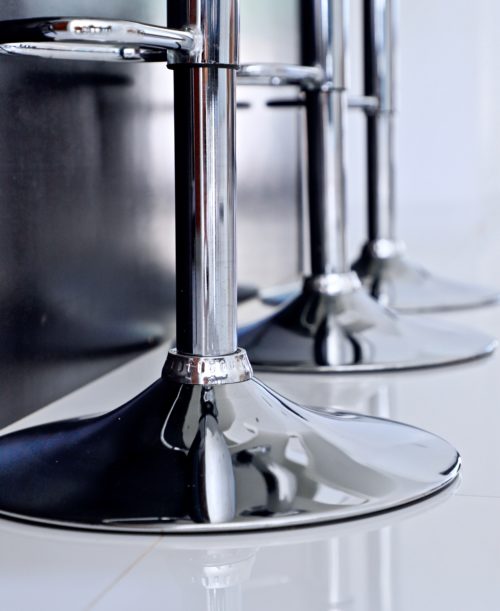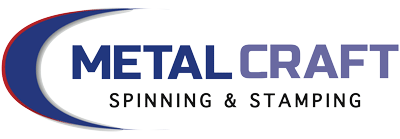Metal Spun Bases; What You Need to Know
Comments Off on Metal Spun Bases; What You Need to Know Metal spinning is a technique for fabricating parts with a circular cross-section from a flat metal disc or cylinder. Metal spinning is also often referred to as spin forming or metal turning. Metal spinning is commonly used in the fabrication of various metallic bases for a wide variety of commercial and industrial goods.
Metal spinning is a technique for fabricating parts with a circular cross-section from a flat metal disc or cylinder. Metal spinning is also often referred to as spin forming or metal turning. Metal spinning is commonly used in the fabrication of various metallic bases for a wide variety of commercial and industrial goods.
Where Are Metal Spun Bases Used?
Metal spun bases are a natural fit for applications requiring a symmetrical, round component as a base or for finishing. They are widely used in the following applications:
- Bases for mannequins and display stands in the clothing industry
- Flag stands, pole bases, or fencing bases for construction projects
- Bases for chairs, tables, bar stools, and various restaurant furniture
- Display cases and stands in grocery and retail stores
Aluminum, brass, copper, steel and metallic alloys are all used to make spun bases. Metal spinning with computer numerical controlled (CNC) machines can produce various bases from any of these metals with strict tolerances.
Furniture manufacturing uses metal spun bases for their visual appeal as well as robustness. Steel is usually the metal of choice for furniture manufacturing due to its machinability and strength. Steel parts are also very durable even under fluctuating ambient conditions and high loads. Furthermore, steel parts have an appealing finish that can be maintained for a long time through simple and easy cleaning methods.
Aluminum and brass are used for products that need a high polish—aluminum is used for commercial products while brass is more suitable for decorative purposes. Copper is appropriate for light fixtures and roofing parts due to its high thermal conductivity.
Advantages of Metal Spinning
The main advantages of metal spinning are as follows:
- Low waste. Spinning generates much less waste than other manufacturing methods and the generated scrap can be easily retained and recycled. This is true for manual spinning as well as precision spinning with CNC machines.
- Reduced costs. Spinning tools cost a much less than the tools used in other manufacturing processes, giving metal spinning a cost advantage over competitive forming methods.
- Durability. Spun parts are essentially a single piece with no seams which makes them very sturdy and durable.
- Speed. The short turnaround time and flexibility of the spinning process makes it an attractive and economical process for volumes ranging from prototyping through high volume production.
- Versatility. Though the process is simple, it can be used for fabricating a wide variety of shapes. Basic spun shapes such as dishes, domes, flanges, hemispheres, and whole spheres can be combined to make more complicated shapes. A virtually endless variety of products of differing shapes, sizes, and finishes can be fabricated when spinning is used in combination with welding.
Metal Craft Spinning & Stamping has been in the metal spinning business for more than 50 years. We are skilled at hand spinning, as well as spinning with modern CNC machines. We also have in-house hydraulic metal stamping presses, enabling us to meet a broad variety of metal forming needs. Metal Craft can be your one-stop shop for bases, stands, and other metal products.
Contact Us today with information about your next project.
5 Tips to Optimize Your Metal Spinning Design
Comments Off on 5 Tips to Optimize Your Metal Spinning DesignSimilar to the way a potter fashions a bowl or vase from clay on a spinning pottery wheel, metal can be spun on manual or CNC lathe to produce a variety of parts and components. Metal spinning is an advantage when you need seamless items or particularly strong structural parts. The process is ideal for production volumes ranging from short-lead prototypes to mass production.
With metal spinning, pieces of flat circular metal are carefully shaped into disks that can be further modified to make common items such as:
- Stainless steel bowls
- Commercial lighting
- Brass instruments
- Gas cylinders
- HVAC Parts
- Roofing parts
- Aerospace parts
- Satellite dishes
Exact shaping of the metal is dependent on additional tools used with the lathe, such as the complex rollers that smooth the metal form over mandrels. Nearly any type of metal can be used for metal spinning, including brass, copper, aluminum, carbon steel, stainless steel, or titanium. When cold form manipulation doesn’t produce optimal results, heat can be applied to improve the workability of the metal as it is spun.
Best results may be achieved by carefully following the best practices for metal spinning planning and design.
1. Define Object Function
If you don’t know exactly what you’re designing, you’re more likely to waste time and materials during the spinning process. It’s important to note that metal can only be spun on both circular or semi-circular shapes, so the process can, in fact, work for designs that require sharp corners. Once the final goal is determined, a design can be created that will leverage metal spinning’s precision and customizability.
2. Pick Your Material
Metal spinning works with a variety of metals, but selecting the appropriate materials for your specific job will ensure the best results and minimize wasted metal. Different metals can have vastly different end results, depending on the thickness you wish to achieve.
Very small changes in diameter or thickness can make a part unusable for your engineering project. In addition, some metals are more likely to get rigid as they are spun. Knowing what metal is best for your application and using a material that’s well-suited to your needs will ensure optimal end results.
3. Consider Material Thickness
Depending on the type of metal you use and the height of the sidewalls, the sidewalls of your object will thin and could vary as much as 25%. You’ll need to carefully consider the amount of pressure you apply from the mandrel to the raw metal.
A larger corner radius will be easier to create and stronger than using tighter corners, so you’ll want to avoid sharp corners in your finished part. The formed radius of the end object should be at least 2–3 times the material thickness for best results. The radius in the corners can in some cases equal the metal thickness, but may vary as much as 30%. The thickness of the bottom will be of equal thickness to the original metal blank.
4. Specify Your Tolerances
Metal spun parts don’t necessarily need consistent thickness throughout. Designs should also note that part diameter can be impacted by roundness and flatness. In parts that are less than 1 foot in diameter, a tolerance of +/- 0.005 inches may be achieved. Less than that diameter, you can expect +/- 0.01 inches, while 2–4 feet requires +/- 0.02 inches and 4–8 feet must have a tolerance of +/- 0.03 inches.
Manufacturing your metal-spun part from a tolerance of +/- 0 .01 of an inch for every foot in diameter is an achievable goal.
5. Cost Factors
Many metal forming methods are not cost effective at low volumes, but you can save time and money by metal spinning prototypes or a short runs. A cost/benefit analysis can help you identify savings for your unique design, especially considering different tolerances or sizes. Creating parts is fast with metal spinning so lead times may be shorter, but it’s important to create a design that facilitates fast and accurate production.
Parts created through metal spinning can be made smaller if needed and are often stronger than those created through other processes. Spinning may improve the properties of the raw metal by aligning the grain structures of the metal more advantageously for your application. Depending on the exact use case, metal spinning can be a more cost-effective way to create one-off parts and prototypes than other metal forming methods.
Metal Spinning from Metal Craft S&S
Metal Craft Spinning and Stamping is a fourth-generation, family-owned business that specializes in the production of high-quality parts for our customers across the United States and North America. If you’re ready to bring your metal spinning design to life, please request a quote to get started.


